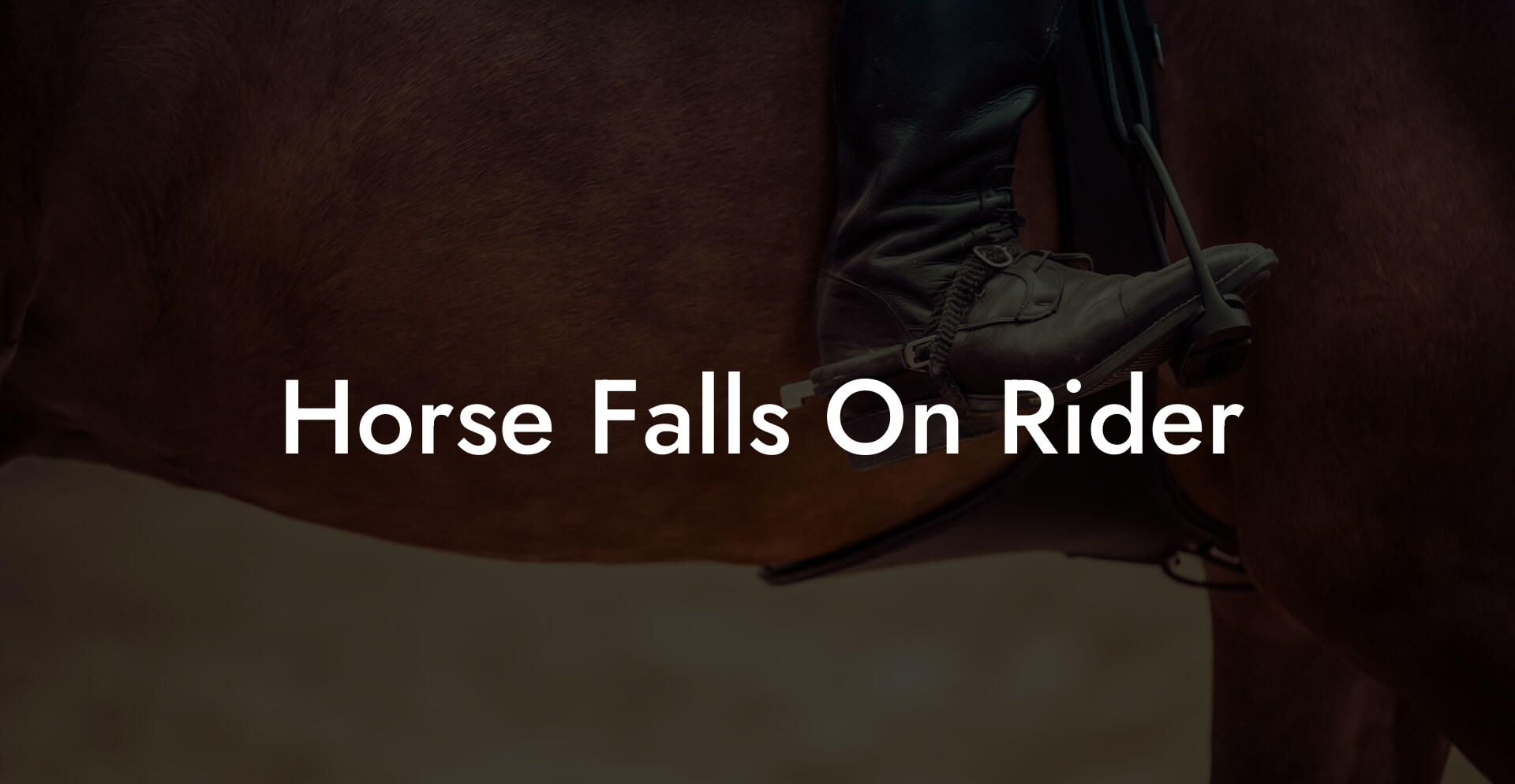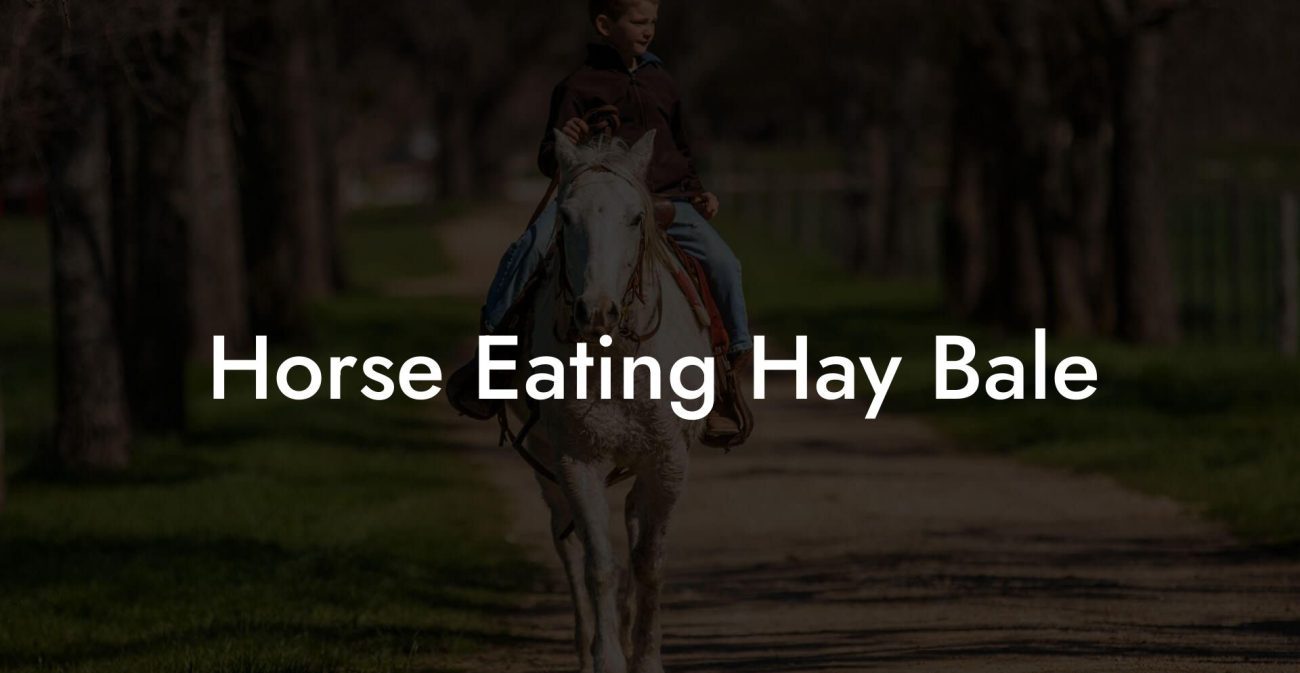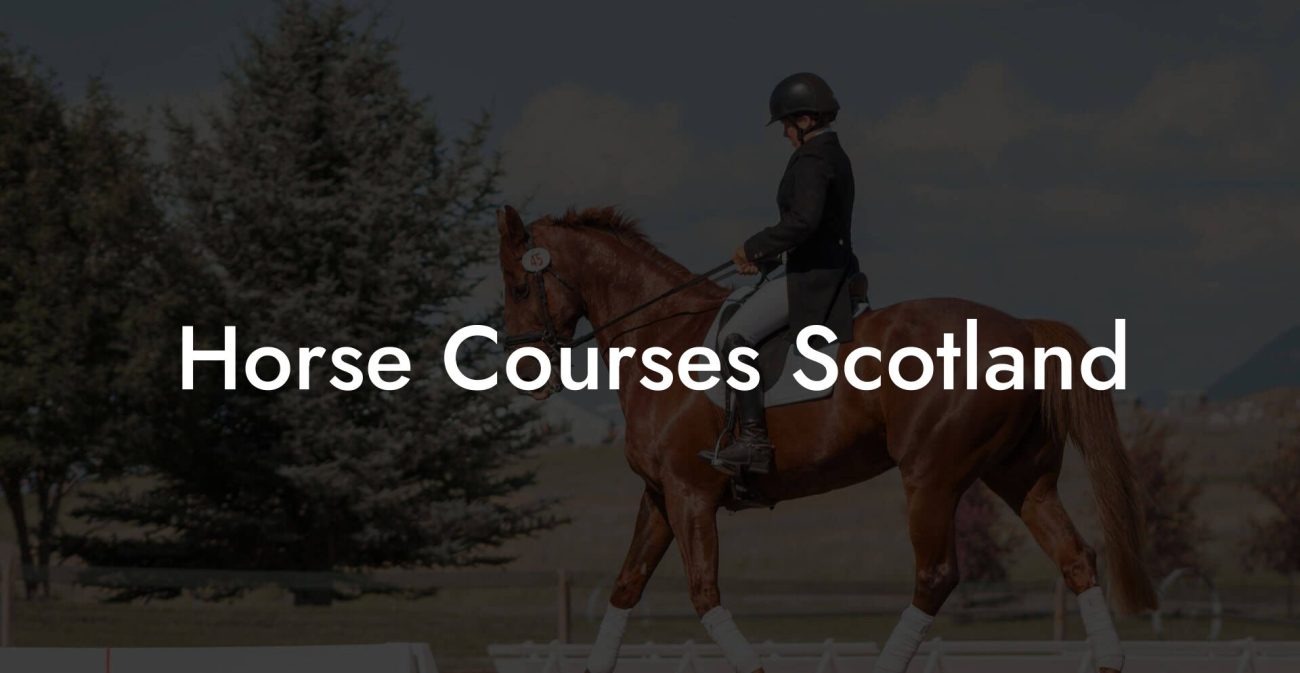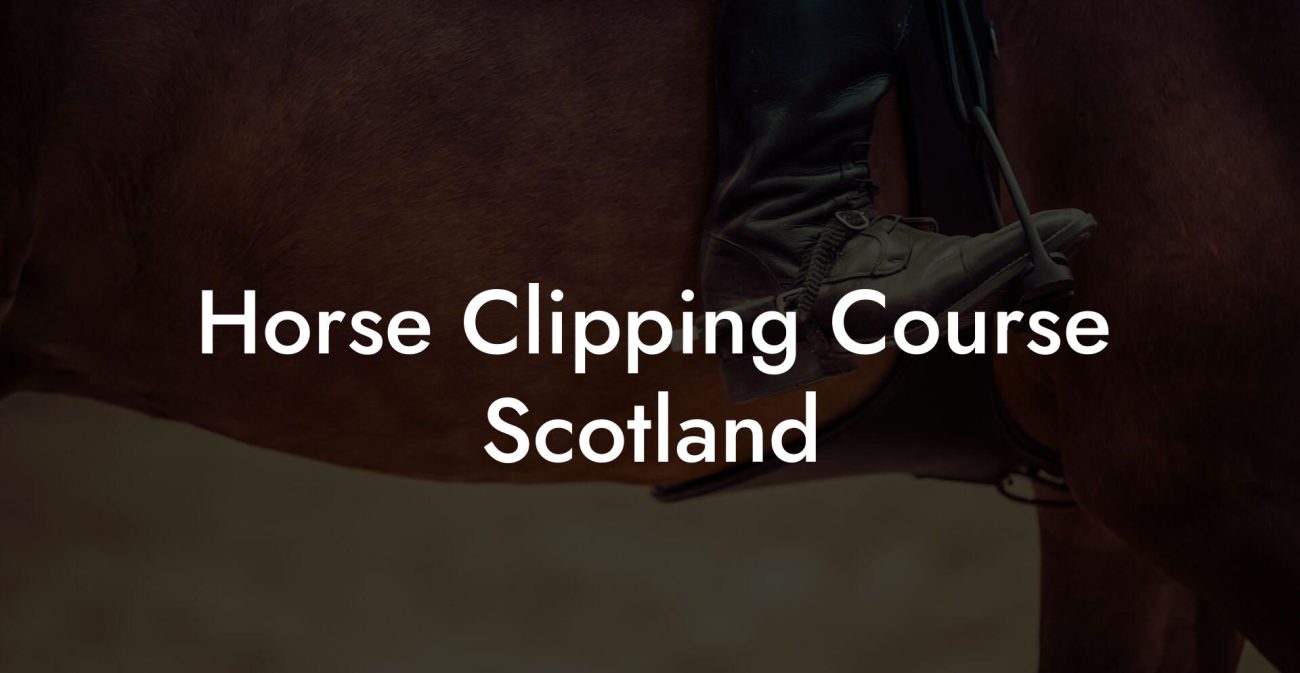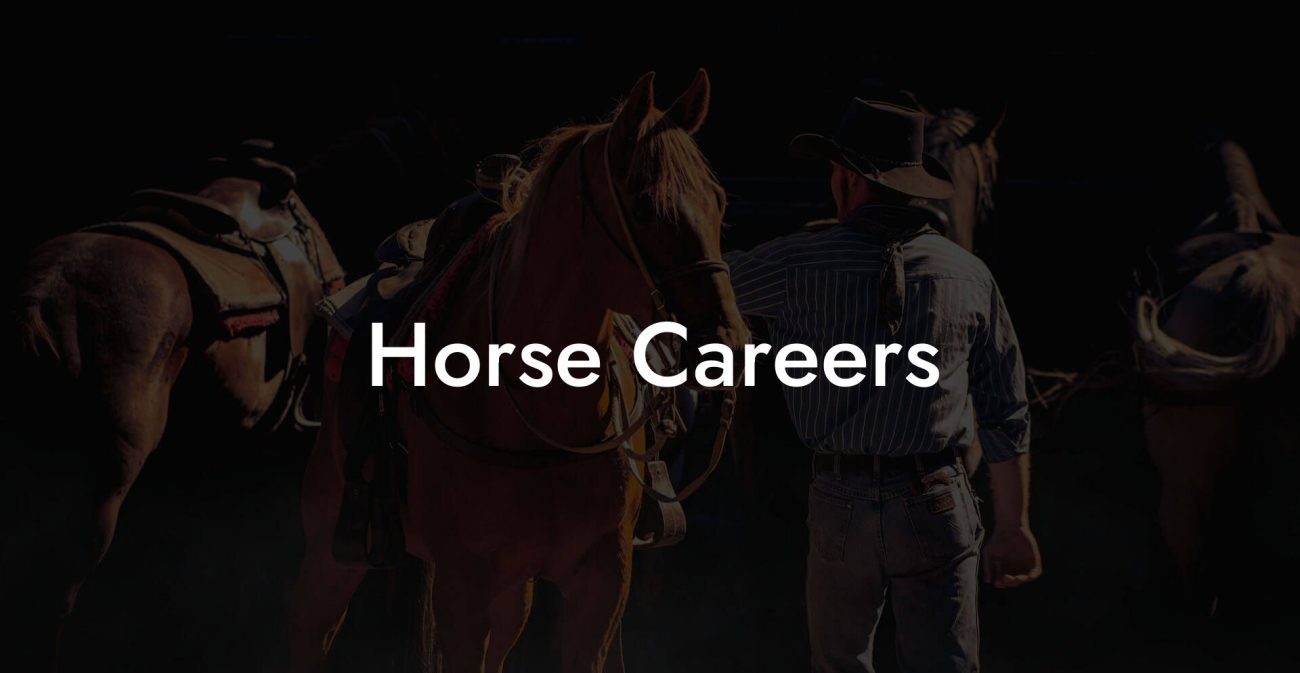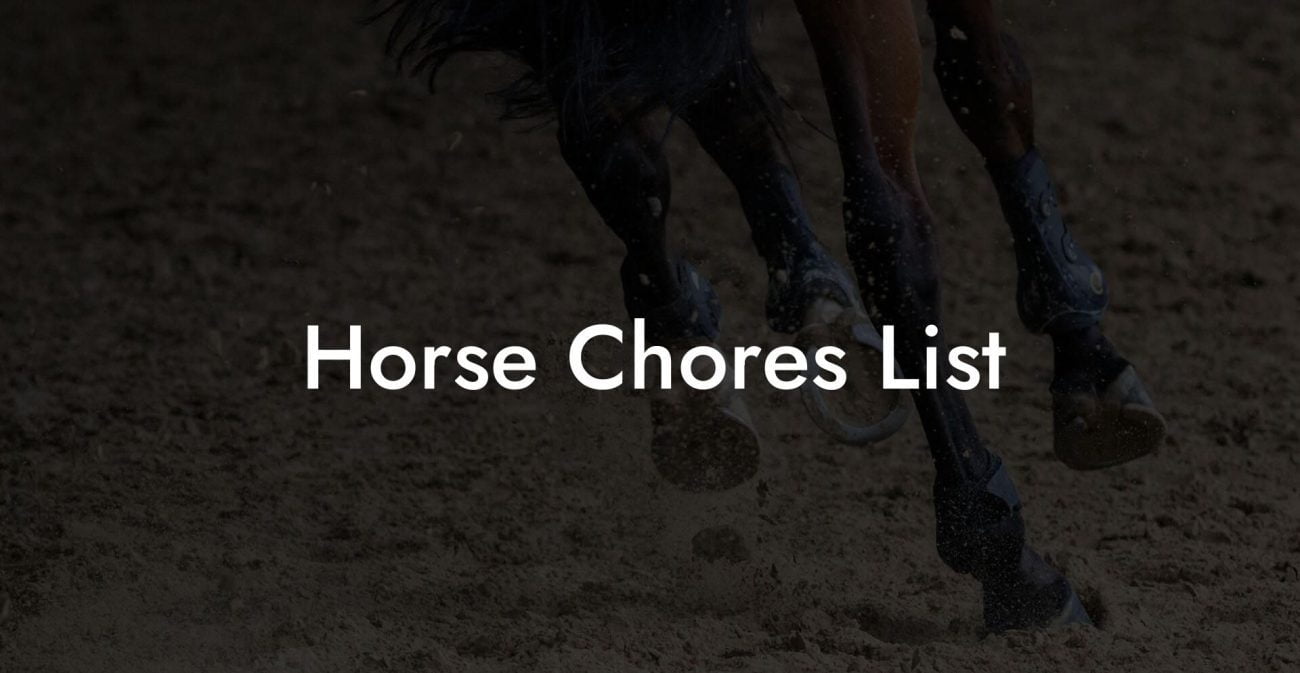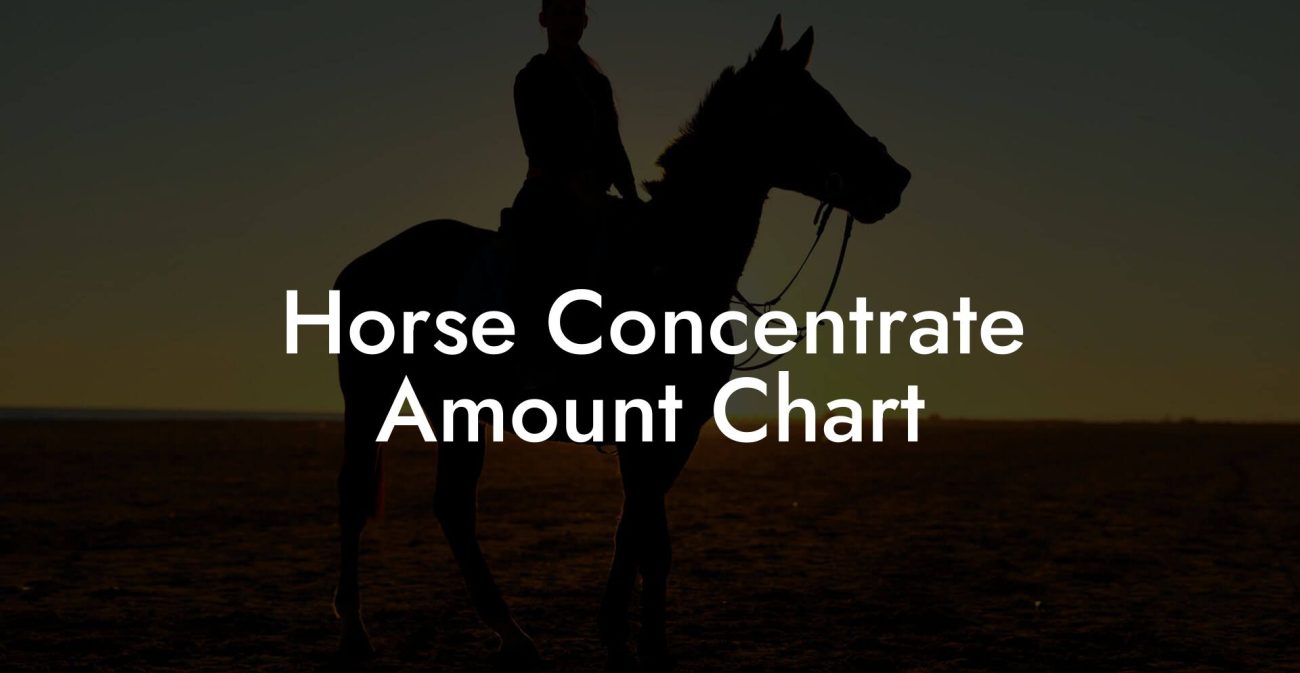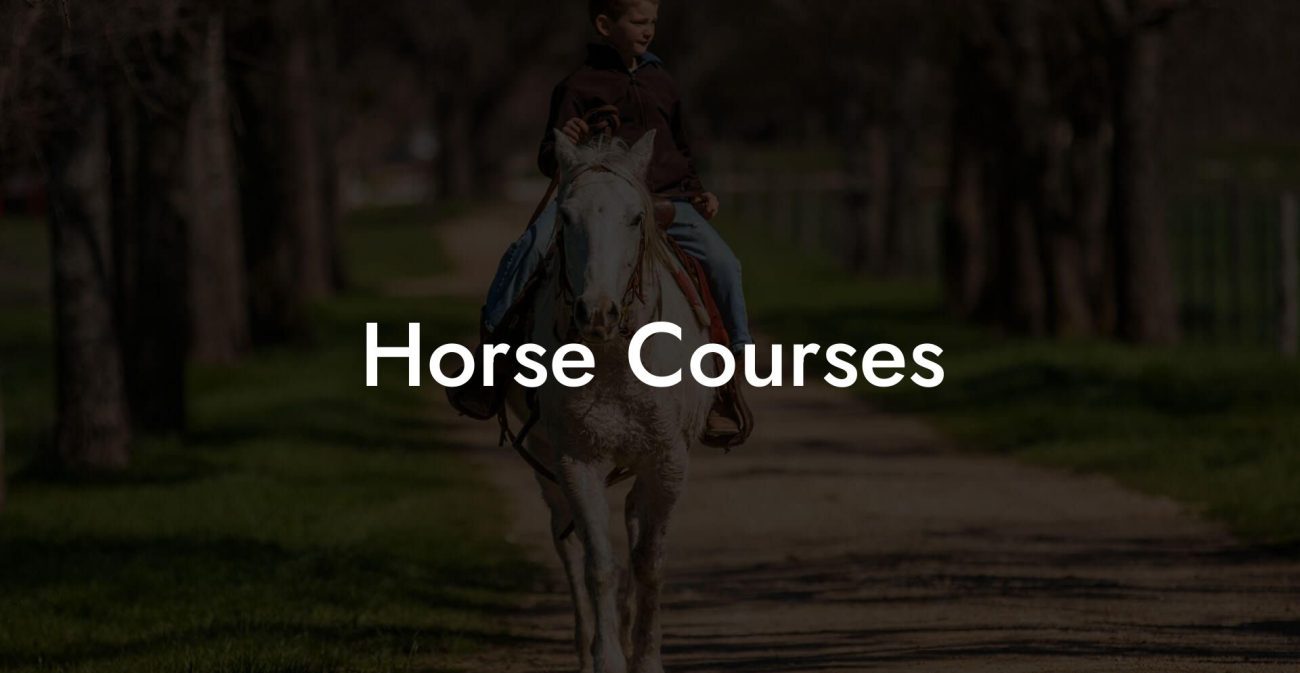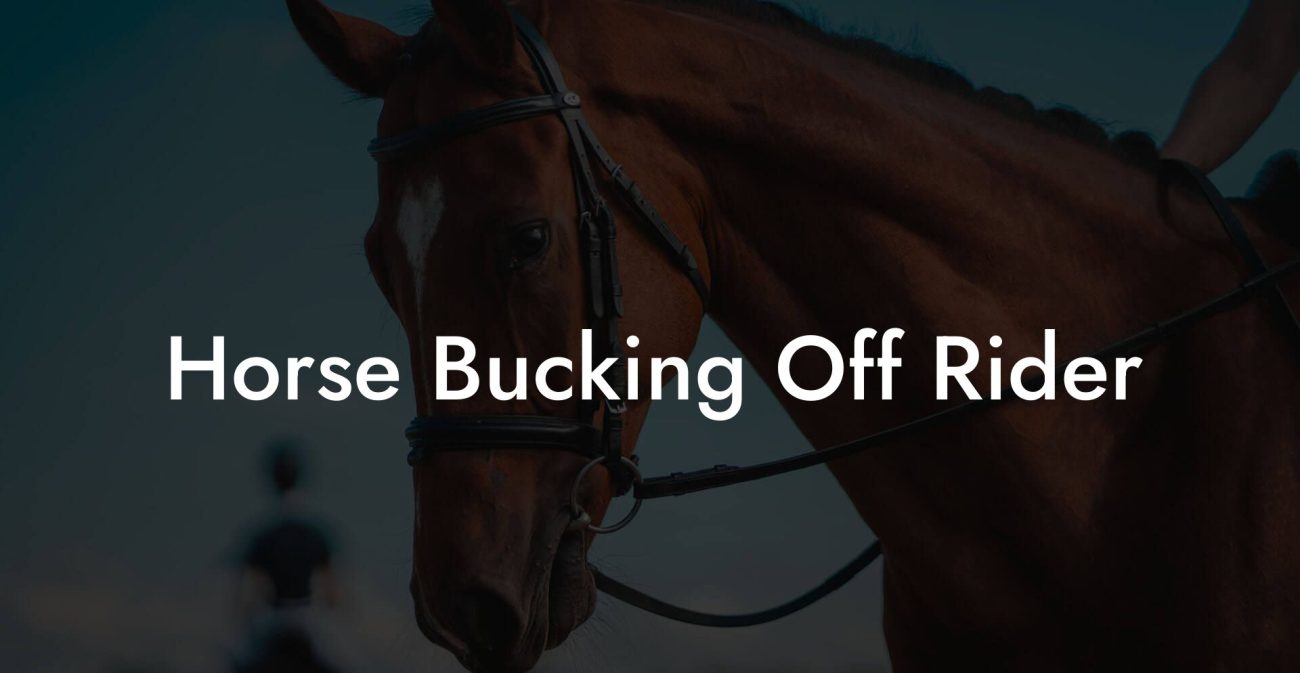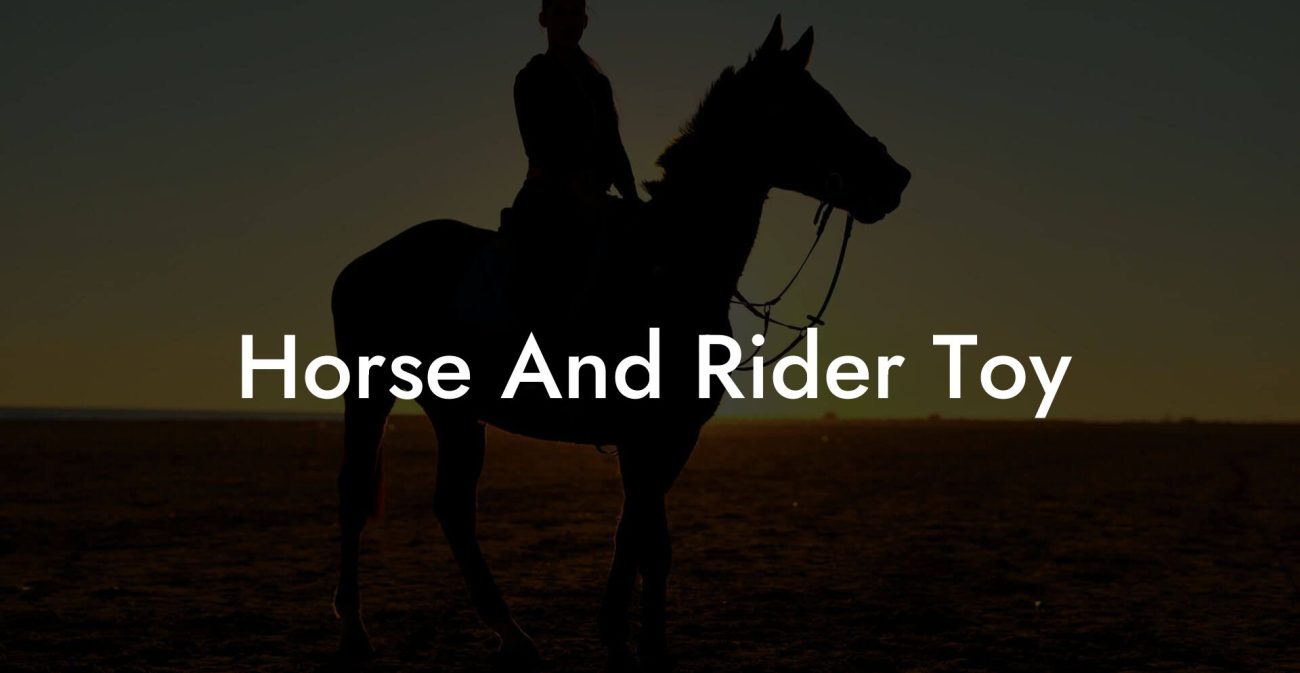One moment you're cruising in perfect harmony with your equine partner along a rugged trail bathed in golden sunlight, and the next, the world turns upside down as your horse unexpectedly stumbles, sending both of you into an unforeseen free-fall. In that adrenaline-pumping instant, your heart races while your mind processes the chaos, and you’re left wondering: What now? If this wild, heart-stopping scenario ever happens, knowing how to care for both you and your horse can turn a potential disaster into a powerful learning experience. Whether you're a seasoned rider or a spirited beginner, understanding the full spectrum of what to do when a horse falls on a rider is essential for safety, recovery, and the long-term trust you build with your four-legged best friend.
Quick Links to Useful Sections
- The Unpredictable Moment: When Horse Falls On Rider
- Understanding the Dynamics of a Fall
- Immediate Actions After the Accident: A Dual Approach
- 1. Prioritize Safety First
- 2. Tackle the Immediate Injuries
- 3. Assess Both Rider and Horse
- Rider Recovery and Rehabilitation: Rekindling Your Inner Strength
- First Steps: Medical Evaluation and Self-Care
- Structured Rehabilitation and Physical Therapy
- Embracing a Gradual Return to Riding
- Ensuring Your Horse Is Also Protected: Equine Care Post-Fall
- Immediate Veterinary Assessment
- Managing Pain and Inflammation
- Monitoring Recovery and Mental Well-Being
- Preventative Measures and Safety Tips for a Safer Riding Experience
- Wear Proper Riding Gear
- Master the Basics of Horse Behavior
- Regular Training and Mock Drills
- Maintain Your Equipment and Environment
- Training and Best Practices for a Safer Riding Experience
- Invest in Quality Instruction
- Cross-Training for Enhanced Balance and Coordination
- Stay Updated on the Latest Gear Innovations
- Engage in Mental Conditioning
- Real-Life Rescue Stories: Lessons Learned from the Unthinkable
- The Reunion of Mia and Thunder
- A Tale of Triumph: Jake’s Second Chance
- Community Support that Made a Difference
- Resources and Community Support: Your Next Steps
- Frequently Asked Questions About Horse Falls on Rider
- Your Journey to Empowered Riding: Embracing Safety, Recovery, and Adventure
The Unpredictable Moment: When Horse Falls On Rider
Accidents in equestrian sports aren’t as rare as you might hope, even in today’s age of high-tech riding gear and advanced training techniques. The unpredictable synergy between man and beast means that, despite countless hours at the arena, a misstep can turn the entire scenario upside down. When your horse loses balance, you both experience an intense moment of shock, fear, and vulnerability. But this is also a chance to learn more about risk management, preventive care, and, most importantly, turning adversity into an opportunity for personal growth.
The surprising event of a horse falling on a rider isn’t just about the physical impact, it's a complex interplay of biology, psychology, and even meteorology. Factors like uneven terrain, unexpected obstacles, or even a rogue gust of wind can change the dynamics of a ride in the blink of an eye. For many riders, that sudden fall is a stark reminder of how important it is to be prepared for every possibility. And while the emergency response protocols might seem like standard procedure, integrating the latest in emergency care knowledge with tried-and-true safety practices is what truly sets informed equestrians apart.
Understanding the Dynamics of a Fall
Before diving into the nitty-gritty of post-accident care, it’s crucial to grasp how and why these incidents occur. A fall, particularly one where a horse’s unexpected loss of balance results in it toppling over its rider, is rarely a simple occurrence. It’s the product of multiple simultaneous forces, kinetic energy, momentum, and even the rider’s reaction time, all colliding at once.
Riders, especially those who are new to equestrian life, need to understand that while accidents are inherently chaotic, each component, be it your horse’s footing, sudden shifts in body weight, or external environmental factors, plays a role. This knowledge not only helps you appreciate the complexities behind a fall but also informs your strategy for effective first aid and recovery. By understanding the physics and psychology behind the incident, you can design better preventative measures and improve your emergency readiness for the future.
Modern equestrian training emphasizes not only riding skills but also risk assessment and safety preparedness. Embracing a proactive mindset helps riders avoid fatal errors and swiftly address injuries when they occur. And while no amount of planning can completely stop accidents, educating yourself about the dynamics of a fall builds a stronger foundation for both prevention and recovery.
Immediate Actions After the Accident: A Dual Approach
In the critical seconds after the fall, every action counts, for both you and your horse. Ensuring safety, assessing injuries, and knowing precisely what steps to take can make all the difference between a minor setback and a major health crisis.
1. Prioritize Safety First
Your first priority should always be to remain calm and assess the immediate environment. Check for any further hazards, such as uneven ground, oncoming traffic (if near roads), or unstable terrain that might pose an additional risk. If you’re riding with others, having a buddy system can ensure that someone is also keeping an eye out for potential dangers.
2. Tackle the Immediate Injuries
Both you and your horse may have sustained injuries, even if they aren’t immediately visible. For riders, common injuries include bruises, sprains, or, in more severe cases, fractures and concussions. For horses, injuries might include muscle strains, lacerations, or even internal injuries that require veterinary attention.
When possible, if you are able to safely dismount or move away from the immediate accident scene, do so with caution. However, try not to move too much if you suspect a spinal injury. Instead, call for help immediately, contacting a professional equine veterinarian should be as high on your list as calling for human medical assistance.
3. Assess Both Rider and Horse
Once you’ve initiated contact with emergency services, check in on your horse. Horses are sensitive creatures; the shock of a fall can often affect them emotionally as well as physically. Look for signs of pain such as limping, reluctance to move, or unusual behavior. Similarly, perform a self-check for any immediate pain or discomfort. Taking a few deep breaths to remain as composed as possible will enable you to act more efficiently in the following steps.
Remember: a clear mind and a swift, reasoned approach in these moments are as crucial as any first aid kit you might have on hand.
Rider Recovery and Rehabilitation: Rekindling Your Inner Strength
After the dust settles from such a dramatic incident, the process of rider recovery can be both a physical and emotional journey. It’s not just about healing bruises or sprains; it’s about mending the sometimes fragile connection between your mind and body after a traumatic experience. For many, the fall might cast a long shadow of self-doubt or fear, making recovery as much about mental reassurances as physical rehabilitation.
First Steps: Medical Evaluation and Self-Care
No matter how minor your injuries may seem, arrange for a professional medical evaluation. Subtle symptoms, from mild headaches to slight muscle aches, might mask more significant underlying issues. A timely diagnosis ensures that you get the appropriate treatment and can design an effective recovery plan.
Equally important is the mental aspect of recovery. It’s typical to encounter moments of flashbacks or anxiety, particularly when you’re on the saddle again. Taking the time to talk to a counselor or joining a support group with fellow riders can provide a safe space to process these emotions.
Structured Rehabilitation and Physical Therapy
Structured rehabilitation is key for regaining strength and confidence. Depending on the nature of your injury, your healthcare provider may recommend physiotherapy to restore mobility. Specific exercises targeting core stability, balance, and muscle endurance are not only vital for recovery but also work wonders in preventing future injuries.
Incorporating yoga or Pilates into your daily routine can help re-establish that critical mind-body connection. These practices aren’t just trendy among millennials and Gen-Z, they are powerful tools for rebuilding strength while simultaneously boosting mental clarity and resilience.
Embracing a Gradual Return to Riding
When you eventually step back into the saddle, patience is essential. Begin with short sessions, focusing on controlled environments that allow you to build trust in your body again. Gradually increase the complexity and duration of your rides as your confidence grows. Over time, this careful approach helps you reclaim your passion for riding while mitigating the risk of re-injury.
Recovery might be slow, but every small step forward is a victory. Embrace the process, knowing that rebuilding your strength is not just a physical journey, it’s an opportunity to rediscover your inner warrior.
Ensuring Your Horse Is Also Protected: Equine Care Post-Fall
When a fall occurs, your horse’s well-being is as paramount as your own. These noble creatures, despite their robust nature, can suffer injuries that might not be immediately evident. Their recovery process shares similarities with humans in terms of screening, treatment, and rehabilitation.
After an accident, it’s crucial to secure and calm your horse. Horses are highly perceptive animals, and the trauma of an unanticipated fall can lead to stress-induced behavior issues. Find a quiet, safe space where your horse can be examined without further agitation.
Immediate Veterinary Assessment
Just as you would rush to an ER after a serious fall, getting your horse evaluated by an equine veterinarian is non-negotiable. Even if your horse appears to be uninjured, a full examination can unearth hidden issues such as soft tissue injuries, swelling, or joint misalignments. Early detection is the key to preventing minor issues from escalating.
Managing Pain and Inflammation
Veterinarians often recommend rest along with anti-inflammatory medications or cold therapy to manage pain and reduce swelling. Your horse might need limited exercise or even temporary stall rest to ensure that any detected injuries have the chance to heal properly.
Monitoring Recovery and Mental Well-Being
Beyond physical health, a horse’s emotional state is critical to recovery. Signs of stress, such as refusing food or sudden behavioral changes, should be monitored closely. Techniques such as gentle massage, calming music, or simply spending more time in a relaxed environment can help your horse regain emotional balance.
The road to recovery for your equine companion may be gradual, but by taking a comprehensive approach that combines veterinary care, proper nutrition, and a nurturing environment, you can help your horse heal faster and return to its vibrant self.
Preventative Measures and Safety Tips for a Safer Riding Experience
They say that prevention is better than cure, and this rings especially true in the equestrian world. In the quest to avoid those heart-stopping moments when a horse falls on a rider, proactive safety practices are invaluable. Modern riding isn’t just about the thrill of adventure; it’s about embracing a balanced, informed approach that prioritizes safety while celebrating the unique bond between you and your horse.
Wear Proper Riding Gear
Think of your riding gear as your personal force field. Helmets, body protectors, sturdy boots, and even gloves are more than just fashion statements, they’re essential pieces of safety equipment. Investing in high-quality, certified protective gear minimizes the risk of severe injury if an accident occurs.
Master the Basics of Horse Behavior
Understanding your horse’s body language and emotional cues can often provide a prelude to potential mishaps. For example, sudden shifts in movement, a twitch in the ear, or an unexpected gaze can signal discomfort or distress. By attuning yourself to these subtle signals, you can take remedial measures before the situation escalates.
Regular Training and Mock Drills
It might not be as glamorous as sharing your latest riding selfies on social media, but engaging in regular safety drills can dramatically reduce the risk of accidents. Organize practice sessions that simulate emergency scenarios, always under controlled conditions. Not only does this build muscle memory for quick, effective responses, but it also solidifies the trust between you and your horse.
Maintain Your Equipment and Environment
A well-maintained set of tack and a carefully inspected riding arena or trail goes a long way toward minimizing potential hazards. Check your saddle, stirrups, reins, and other gear regularly for signs of wear and tear. Equally important is ensuring that the paths you ride on are clear of obstacles, hazards, and uneven surfaces.
By taking these preventive measures seriously, you not only protect yourself and your horse but also contribute to a culture of safety that benefits the entire equestrian community.
Training and Best Practices for a Safer Riding Experience
The journey to preventing falls and promoting safer riding experiences is an evolving process. Advances in gear, training methodologies, and even sports psychology are continuously reshaping how riders approach their craft. Whether you’re climbing the competitive ranks or simply enjoying casual trail rides, embracing best practices is your ticket to a resilient and joyful equestrian lifestyle.
Invest in Quality Instruction
Even the most naturally talented riders can benefit from the guidance of skilled, knowledgeable trainers. From professional clinics to immersive training sessions, working with a seasoned instructor will expose you to both foundational techniques and advanced riding tips that emphasize safety and responsiveness.
Cross-Training for Enhanced Balance and Coordination
Cross-training activities, such as indoor cycling, swimming, or even dance, can boost your balance, coordination, and body awareness. A well-rounded fitness routine not only helps prevent falls by building core strength but also enhances overall riding performance.
Stay Updated on the Latest Gear Innovations
Technology isn’t just confined to the digital realm; it has made a significant impact on the equestrian world too. From helmets equipped with impact sensors to innovative saddle designs that improve rider posture, keeping an eye on the latest gear innovations can give you an edge in safety and performance.
Engage in Mental Conditioning
Riding is as much a mental sport as it is a physical one. Training your mind through practices like meditation, visualization, or even game-based concentration techniques can solidify your confidence on the saddle. A focused and relaxed rider is far less likely to panic when challenges arise, ensuring that every fall becomes an opportunity for learning rather than a setback.
Integrating these best practices into your routine not only builds safety into every ride but also elevates your enjoyment of the sport, helping you forge an even deeper connection with your horse and the riding lifestyle.
Real-Life Rescue Stories: Lessons Learned from the Unthinkable
Sometimes, the most powerful lessons are learned from the vivid stories of those who have been there. Throughout the equestrian community, countless riders have experienced the terrifying moment when their horse falls on them, only to emerge with renewed wisdom, resilience, and a profound respect for safety. These narratives remind us that even in the midst of chaos, hope, assistance, and recovery are possible, and often lead to transformative change.
The Reunion of Mia and Thunder
Mia, an avid trail rider, one afternoon found herself grappling with a near-catastrophic fall. While negotiating an unexpectedly slippery path, her trusted horse, Thunder, stumbled. The resulting tumble was as dramatic as it was scary. Instead of remaining paralyzed by fear, Mia’s quick thinking, backed by years of practicing safety drills, enabled her to land with minimal injury. What could have been a devastating setback turned into an invaluable lesson about preparedness and calmness under pressure. Thunder, though initially shaken, also rebounded beautifully with the care and prompt attention of a skilled veterinarian.
A Tale of Triumph: Jake’s Second Chance
In another inspiring story, Jake, known among his peers for his daredevil riding style, suffered a hard fall during a competitive event. The accident left him with bruises and a fractured confidence. However, with tailored physical therapy, mental health support, and a renewed focus on safety techniques, Jake slowly embraced cautious re-entry into the world of high-speed riding. His journey highlights that recovery is not just physical, it's about rebuilding your connection to the sport and learning to trust again.
Community Support that Made a Difference
Both Mia and Jake credit their remarkable recoveries to the robust support network within the equestrian community. Their stories echo a common theme: when riders band together, sharing experiences, tips, and emotional support, they create an environment where setbacks are overcome collectively. In these moments, the spirit of community shines through, reinforcing that the journey to safety and recovery is not one you have to take alone.
Real-life rescue stories are a testament to the strength and resilience inherent in the equestrian lifestyle. Each experience not only imparts practical safety lessons but also inspires fellow riders to make informed decisions, invest in proper training, and remain vigilant about both personal and equine health.
Resources and Community Support: Your Next Steps
There’s a wealth of resources out there just waiting to support you on your journey to safer riding. From online communities to local riding clubs, forums where seasoned riders share advice, and eLearning platforms brimming with safety protocols, each source can offer fresh insights and the much-needed reassurance that you’re not alone.
Consider these actionable steps as you forge ahead:
- Join Local Riding Groups: Engage with peers who can share personal experiences and collective wisdom from near-miss events and genuine accidents.
- Follow Renowned Equine Safety Blogs: Stay updated on the latest riding safety innovations, training techniques, and expert advice.
- Attend Workshops and Safety Drills: Put theory into practice by signing up for hands-on training clinics that simulate emergency scenarios.
- Consult with Experienced Veterinarians and Instructors: Build relationships with professionals who can provide personalized advice both before and after incidents.
- Utilize Digital Tools: Leverage mobile apps and online platforms that offer guided exercises, first aid tips, and even virtual safety checklists for both riders and horses.
The road to enhanced safety in equestrian adventures is paved with knowledge, empathy, and continuous learning. With every conversation you have, every article you read, and every practice session you engage in, you’re investing in a future where both you and your horse thrive together.
Frequently Asked Questions About Horse Falls on Rider
Below are some of the most common questions riders ask about what to do when a horse falls on a rider, along with clear, expert-backed answers to guide you in those critical moments.
1. What are the most common injuries for riders when a fall occurs?
Riders may experience bruises, sprains, fractures, or even concussions following a fall, depending on the impact and nature of the accident. It’s always advisable to get a full medical evaluation after any significant fall.
2. How can I quickly assess if my horse is injured after a fall?
Observe your horse’s behavior closely. Signs of distress include limping, wavering, refusal to stand, or signs of pain when touched. Even if no external injuries appear obvious, a veterinary examination is crucial to rule out internal damage.
3. What immediate actions should I take after a fall?
First, ensure that both you and your horse are in a safe area away from additional hazards. Call for emergency help if necessary, and calmly assess any injuries before moving to administer first aid.
4. Can wearing protective gear reduce the severity of injuries during a fall?
Absolutely, wearing well-fitted helmets, body protectors, and recognizing the importance of quality riding boots can significantly reduce the risk and severity of injuries.
5. How can I rebuild confidence in riding after experiencing a fall?
Engaging in structured rehabilitation, working with professional trainers, and gradually transitioning back to riding under controlled conditions are essential steps to regain confidence.
6. Is there a role for technology in enhancing equestrian safety?
Yes, many riders now utilize wearable devices, impact sensors, and even mobile apps that offer real-time safety tips and monitor riding performance, all of which can help prevent accidents.
7. What should I do if my horse appears emotionally distressed after a fall?
Apart from medical evaluation, helping your horse calm down through gentle handling, quiet time, and possibly the aid of calming tools like specific music or aromatherapy can be very beneficial.
8. How important is community support in dealing with riding accidents?
Extremely important. Sharing experiences and strategies in communities and seeking advice from seasoned riders can provide both practical solutions and emotional relief.
Your Journey to Empowered Riding: Embracing Safety, Recovery, and Adventure
Riding isn’t just an activity; it’s an adventure that brings together the thrill of speed, the serenity of nature, and the deep bond formed between human and horse. When accidents occur, they serve as a wake-up call, a reminder that safety isn’t a guarantee but a practice that needs constant refinement. Every fall, every bruise, and every moment of recovery is a powerful lesson in resilience, self-care, and the intricate beauty of equine partnership.
Embracing this journey means accepting that while falls are an inevitable part of riding, the way you recover and learn from them is what defines you as an equestrian. Whether you’re meticulously planning your next ride with enhanced safety gear, engaging in regular training drills, or even sharing your experience on social media to help fellow riders, each step contributes to a culture of care and mutual growth.
Empowerment in riding comes from knowledge, preparation, and the willingness to continuously improve, not just for your own sake, but for the well-being of your horse and everyone in your community. So, take this experience as a catalyst to invest in quality training, participate in supportive forums, and always strive for a safer, more informed equestrian lifestyle.
Your journey to empowered riding is a mosaic of moments, a blend of adrenaline, caution, laughter, and the occasional bruise. Celebrate your victories, learn from your setbacks, and remember that every ride is an opportunity to fortify the bond between you and your magnificent companion. The adventure continues, and with every step, you’re building a legacy of safety, strength, and unstoppable spirit.
So saddle up, stay alert, and let each ride remind you that the true essence of equestrian life lies not in the absence of falls, but in the determination to rise, learn, and ride stronger than ever before.

